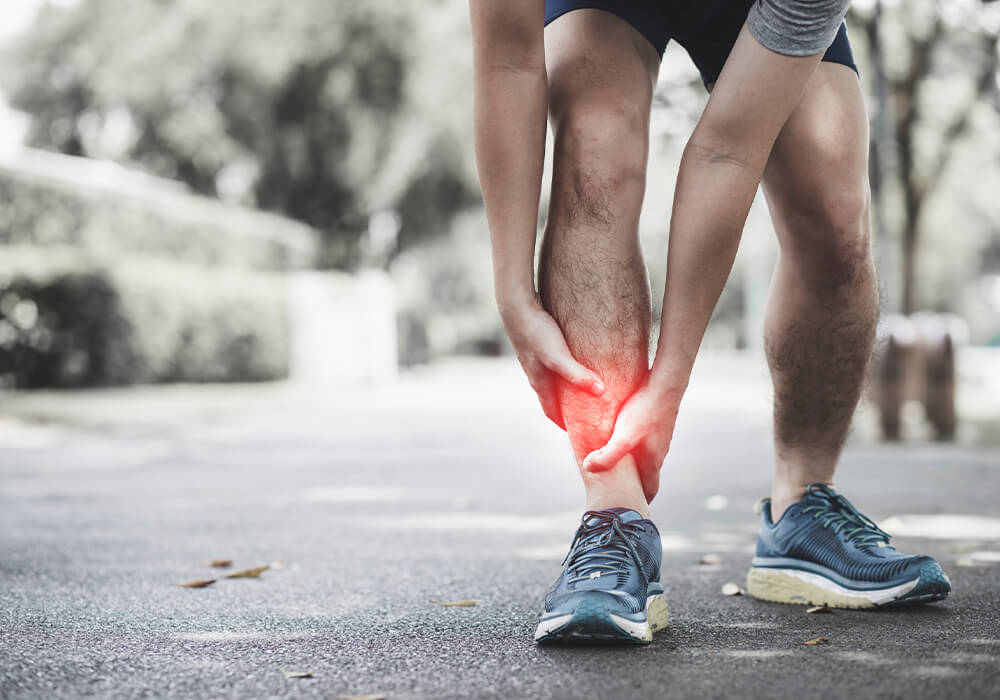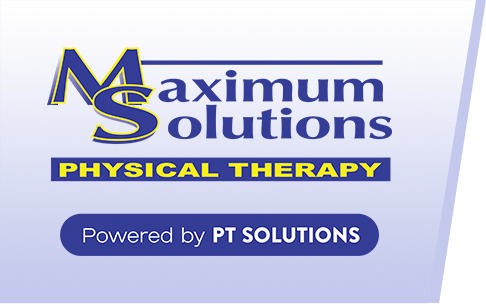Running Injury Prevention: Essential Strategies for Safe Strides
Running is a fantastic way to maintain cardiovascular health, improve endurance, and boost mental well-being. However, the repetitive stress and impact of running can lead to injuries if proper precautions are not taken. Running injuries often result from overuse, improper technique, inadequate footwear, or failure to allow the body sufficient recovery time. They can typically be prevented with the right approach to training and self-care. At Maximum Solutions Physical Therapy, we understand runners’ passion for their sport and the disappointment injuries can bring. This comprehensive guide outlines essential strategies for safe strides, helping you stay on track, injury-free, and enjoying the many benefits of running.

10 Essential Strategies for Injury Prevention
From the importance of a dynamic warm-up to adopting proper running techniques and selecting appropriate footwear, these strategies form the foundation of a safe running practice. Whether you’re a beginner looking to start on the right foot or an experienced runner aiming to refine your approach, these strategies will guide you toward injury-free running, enabling you to enjoy every step of your journey with confidence and security.
1. Start with a Proper Warm-Up
A dynamic warm-up increases blood flow, improves flexibility, and activates the nervous system, preparing the mind and body for physical exertion. To maximize the benefits, your warm-up should last at least 5-10 minutes and gradually increase in intensity. Incorporating dynamic stretches that simulate running movements helps ensure that the muscles and joints are adequately prepared for the activity ahead, reducing the likelihood of strains or sprains.
2. Adopt Proper Technique
Efficient running form minimizes unnecessary energy expenditure and reduces joint and muscle stress. Techniques to improve running form and efficiency include:
- Focus on Posture: Maintain an upright posture with a slight forward lean. Keep the head aligned with the spine and avoid slouching.
- Optimize Stride: Avoid over-striding. Aim for a comfortable stride length that allows your feet to land under your body.
- Foot Strike: Be aware of how your foot lands with each step. Aim for a mid-foot strike to distribute impact more evenly.
- Arm Swing: Use a relaxed arm swing with elbows bent at about 90 degrees. This helps with balance and prevents wasted energy.
- Breathing Technique: Practice rhythmic breathing to increase oxygen intake and stability. Coordinate your breath with your stride for efficiency.
3. Wear Appropriate Footwear
Selecting the right footwear involves more than just cushioning; it’s about finding the correct support for your arch type and gait pattern. Specialty running stores often offer gait analysis to match you with the best shoe for your needs. Remember, the terrain you run on should also influence your shoe choice—trail running shoes for uneven surfaces, for example, offer added traction and stability.
4. Gradually Increase Training Intensity
The 10% rule is a guideline meant to prevent overtraining and overuse injuries, allowing the body time to adapt to increased physical demands. Periodization—varying the intensity and volume of your runs throughout the week—is also beneficial to incorporate into your training to promote recovery and performance improvements.
5. Incorporate Strength Training and Cross-Training
Strength training enhances muscular endurance and joint stability, crucial for runners. Here are a few exercises to strengthen the muscles used in running:
- Squats and Lunges: These exercises strengthen the quadriceps, hamstrings, glutes, and calves, essential for powerful running strides.
- Calf Raises: This exercise targets the calf muscles, which are vital for propulsion and stability during running.
- Glute Bridges: Strengthening the gluteal muscles helps prevent hip and lower back pain, which is common in runners.
- Hamstring Curls: Strong hamstrings are essential for runners to maintain balance and muscle strength, especially with the quadriceps.
Conversely, cross-training reduces the monotony of running and engages different muscle groups, reducing the risk of overuse injuries while maintaining overall fitness.
6. Prioritize Flexibility and Mobility
Enhanced flexibility and mobility contribute to a more efficient and injury-free running stride. Dynamic stretches are preferred before a run, while static stretching can be more beneficial afterward to help muscles relax and lengthen. Incorporating mobility work for the ankles and hips can also improve stride length and reduce the risk of compensatory injuries:
- Dynamic Stretching: Before a run, engage in dynamic stretches like leg swings and walking lunges to prepare the muscles.
- Static Stretching: After running, perform static stretches focusing on the hamstrings, quadriceps, calves, and hip flexors. Holding each stretch for 20-30 seconds can improve flexibility over time.
- Yoga: Incorporating yoga into a weekly routine can benefit runners. It not only improves flexibility but also aids in balance and mental focus.
7. Listen to Your Body
Understanding the difference between general discomfort associated with training and the pain of an injury is crucial. Implementing a “hard day, easy day” approach to training can help manage fatigue and reduce injury risk. It’s important to pay attention to warning signs and allow for adequate rest and recovery when symptoms of overuse or injury arise.
8. Stay Hydrated and Nutritionally Balanced
Hydration affects joint lubrication and muscle function, making it a key factor in injury prevention. Nutrient-rich foods support muscle repair and energy levels, with carbohydrates for fuel, proteins for muscle repair, and fats for sustained energy. Don’t forget micronutrients—vitamins and minerals—that support overall health and recovery.
9. Implement Recovery Strategies
Active recovery, including light exercise on rest days, promotes circulation and aids in muscle repair without placing undue stress on the body. Techniques like foam rolling can alleviate muscle tightness, while ice baths might reduce inflammation after particularly intense sessions.
10. Seek Professional Guidance
A physical therapist can offer invaluable insights into preventing and managing running injuries. They can assess your biomechanics, identify potential risk factors for injury, and design a personalized training plan that addresses your needs. Regular check-ins with a professional can help adjust your training as you progress, ensuring continuous improvement and minimizing injury risk.
When to Seek Professional Help
Understanding when to seek professional assistance is crucial for runners who experience injuries or persistent discomfort. If you find that pain or discomfort continues after adequate rest days and applying home treatments, it’s important to consider professional consultation. Acute pain, particularly sharp or sudden discomfort, warrants immediate medical attention to prevent further injury. If the pain associated with running begins to impact your ability to perform everyday tasks, this reduction in mobility is a clear sign that your condition requires assessment by a healthcare provider. By staying on the lookout for early signs of injury and understanding when to seek professional guidance, runners can maintain their performance and enjoy the sport they love with reduced risk.
The Role of Physical Therapy
Physical therapy is essential to managing and preventing running injuries through:
- Diagnosis and Customized Care: Maximum Solutions physical therapists are skilled in pinpointing the root cause of your injury and devising a specific recovery strategy to tackle it.
- Guided Rehabilitation: Physical therapists aid in healing the injury through targeted exercises and therapeutic practices while working to prevent similar issues in the future.
- Educational Guidance: Runners can receive expert advice on optimal running techniques, effective warm-up and cool-down exercises, and avoiding injuries.
- Personalized Training Programs: At Maximum Solutions Physical Therapy, we design bespoke exercise routines that strengthen and increase your body’s flexibility, lowering the likelihood of recurrent injuries.
Stride Toward Optimal Health
Running is a rewarding yet physically demanding activity that requires careful attention to injury prevention strategies. You can significantly reduce your risk of common running injuries by incorporating proper warm-up routines, technique adjustments, appropriate footwear, gradual training progressions, and recovery practices. Listening to your body and seeking professional guidance when needed are key components of a successful and sustainable running practice. At Maximum Solutions Physical Therapy, we’re committed to helping you achieve your running goals safely and enjoyably, ensuring that every stride is a step towards optimal health and performance. Please call (888) 212-9057 or request an appointment here to get started today!

